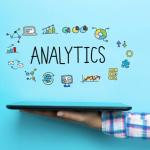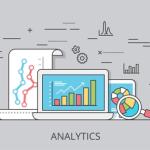It is unrealistic to link every activity. In some cases, you may only be able to...
FP&A works on a jigsaw puzzle of major core financial statements and structure systems of the company. They need to be able to look around five years back and five years forward to identify abnormalities and trends, do balance sheet analytics, and conduct a cost analysis to answer complex questions around how and where the company is making a profit, how the firm behaves, who should be hired and where they should be placed as related to cost profiles, etc.
Of course, legacy FP&A Departments have multiple Excel files in place to do all of this and this has worked for many years, but there are some major flows like the fact that data analysis is limited to 10 million rows of data or that some files live only in one computer.
FP&A must drive profitable business decisions. As companies increase investments in advanced analytics, CFOs and their FP&A leaders are well-positioned to provide precise forecasts and actionable insights to support quick and accurate decision making.
However, dispersed organisational data and outdated, non-standardised reporting processes mean financial planning and analysis teams often fail to provide clear, decision-ready insights that businesses need to drive growth. Additionally, analysis by Gartner shows only 3% of companies have strategic, operational and financial planning processes that are fully aligned and integrated.
So how to be more strategic and integrated? There are three tools that can transform your FP&A Department and we will talk about them below:
Python
SQL
Tableau
1. Python
Python is the fastest-growing programming language in Finance and it can be used for many tasks in finance like data analysis and visualisation, Machine Learning and automation!
Python is a high-level programming language. This means that is closer to human language as opposed to machine language. Programming languages like C++ or Java which were taught years ago in finance universities are on the other side of the spectrum. They are closer to binary code of 0s and 1s than English.
This is one of the reasons that Python is so simple and easy to learn. For example, if you want to print the words “hello world” using Python the code is just: print(“hello world”). In Java, things get super complicated very quickly as you can see in the image below.
Python is simple and easy to learn, yet Python is also powerful and has a large ecosystem. There is multiple ways you can learn Python, from YouTube videos, books, online forums, workshops, online courses, at university, from peers or even Apps! But in this article, we are going to talk about my journey in learning Python.
Some great Libraries:
NumPy (quick, vectorised array operations)
SciPy (scientific classes & functions)
Pandas (times series and tabular data analysis)
Scikit-learn (Machine Learning algorithms)
DX Analytics (Multi-risk derivatives and portfolios)
Pyfolio (portfolio management, performance analysis)
If you want to learn more about #Python I recommend: From Finance and Accounting to Data Science: Learn Python Programming

Figure 1
2. SQL
Structured Query Language or “SQL” for short is a programming language used to query and manipulate data stored in relational databases. The language is becoming increasingly popular in Finance and Accounting as we find more and more ways to use data.
SQL is not longer an “IT skill” or something that “tech people” know what to do. SQL is really accessible and easy to use so people in finance and accounting can now retrieve their own data by learning a little bit of SQL.
By adding more technical skills to your finance and accounting knowledge, you can be more independent from the IT department. It’s all about self-serviced analytics which is a form of business intelligence (BI) in which line-of-business professionals are enabled and encouraged to perform queries and generate reports on their own, with nominal IT support.
By learning technical skills such as SQL, now you can more easily communicate your problems to other departments such as IT when you do need help. Having both business and technical knowledge can be very valuable to the company you work for (or to clients if you have your own business).
3. Tableau
As Forbes mentioned in 2016, Data Storytelling is the Essential Data Skill Everyone Needs!
Once your business has started collecting and combining all kinds of data, the next elusive step is to extract value from it. Your data may hold tremendous amounts of potential value, but not an ounce of value can be created unless insights are uncovered and translated into actions or business outcomes.
Tableau is a visual analytics platform that empowers people and companies to take data, to be able to understand it, to process it, to extract value from it, to visualise it, to communicate their insights to others effectively; essentially, telling the story of the numbers.
Subscribe to
FP&A Trends Digest

We will regularly update you on the latest trends and developments in FP&A. Take the opportunity to have articles written by finance thought leaders delivered directly to your inbox; watch compelling webinars; connect with like-minded professionals; and become a part of our global community.




